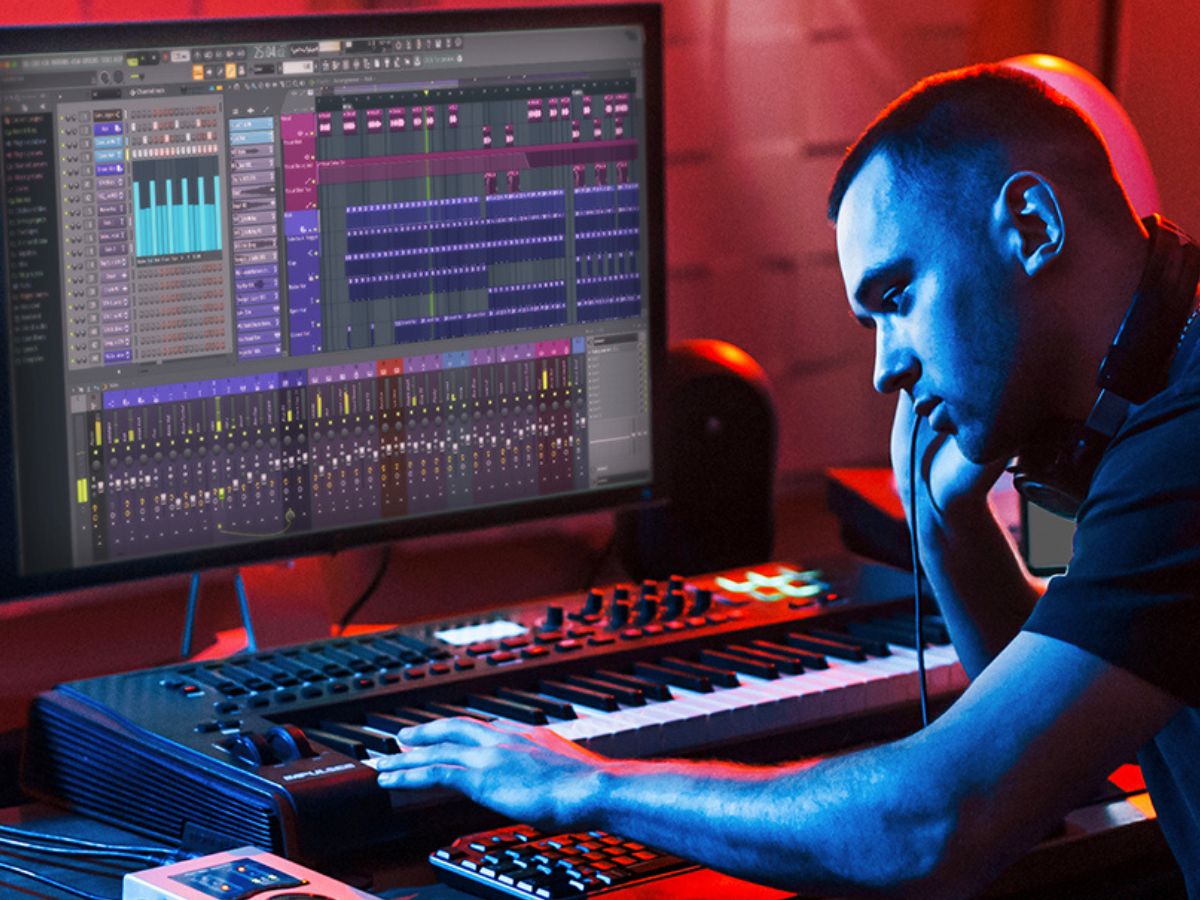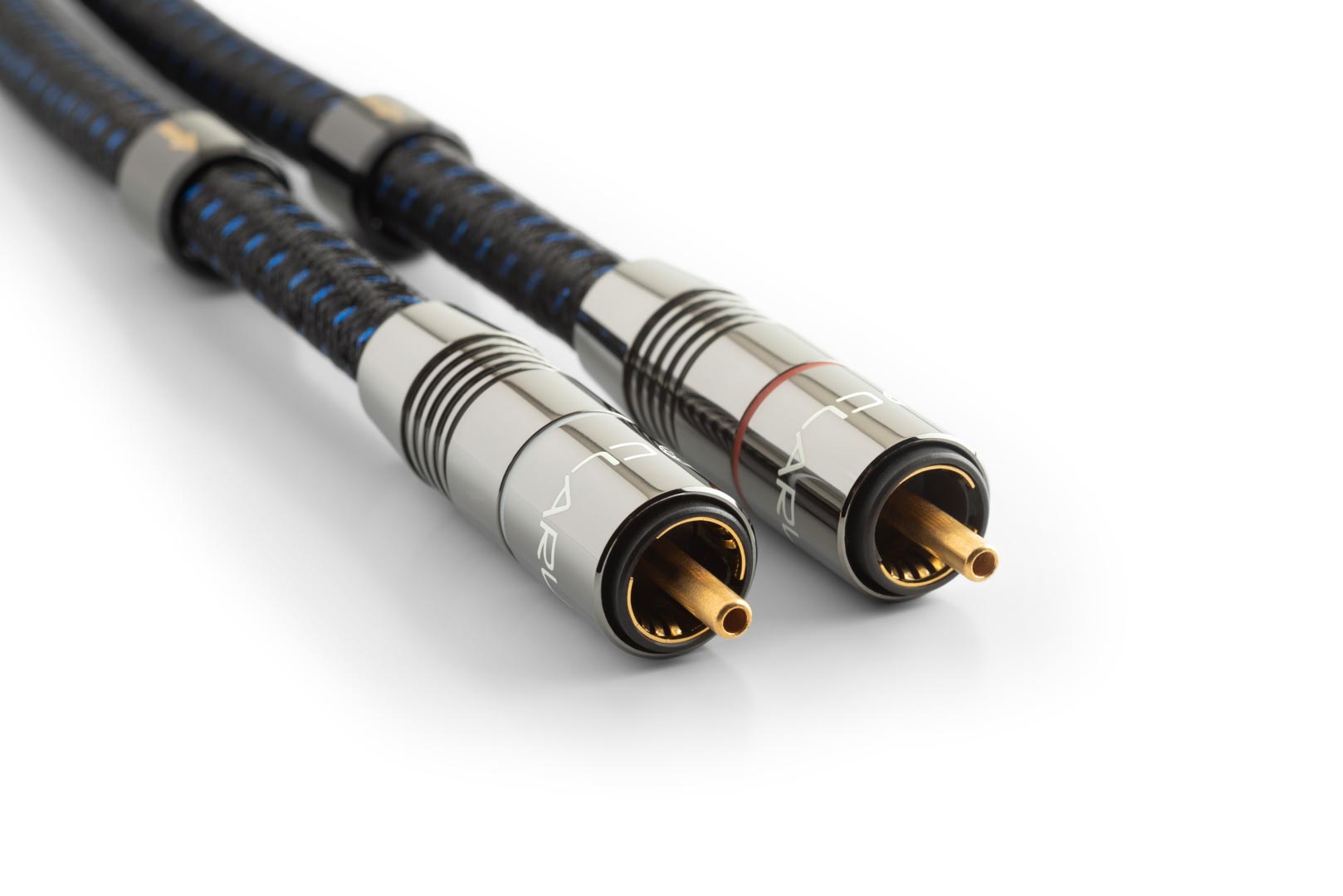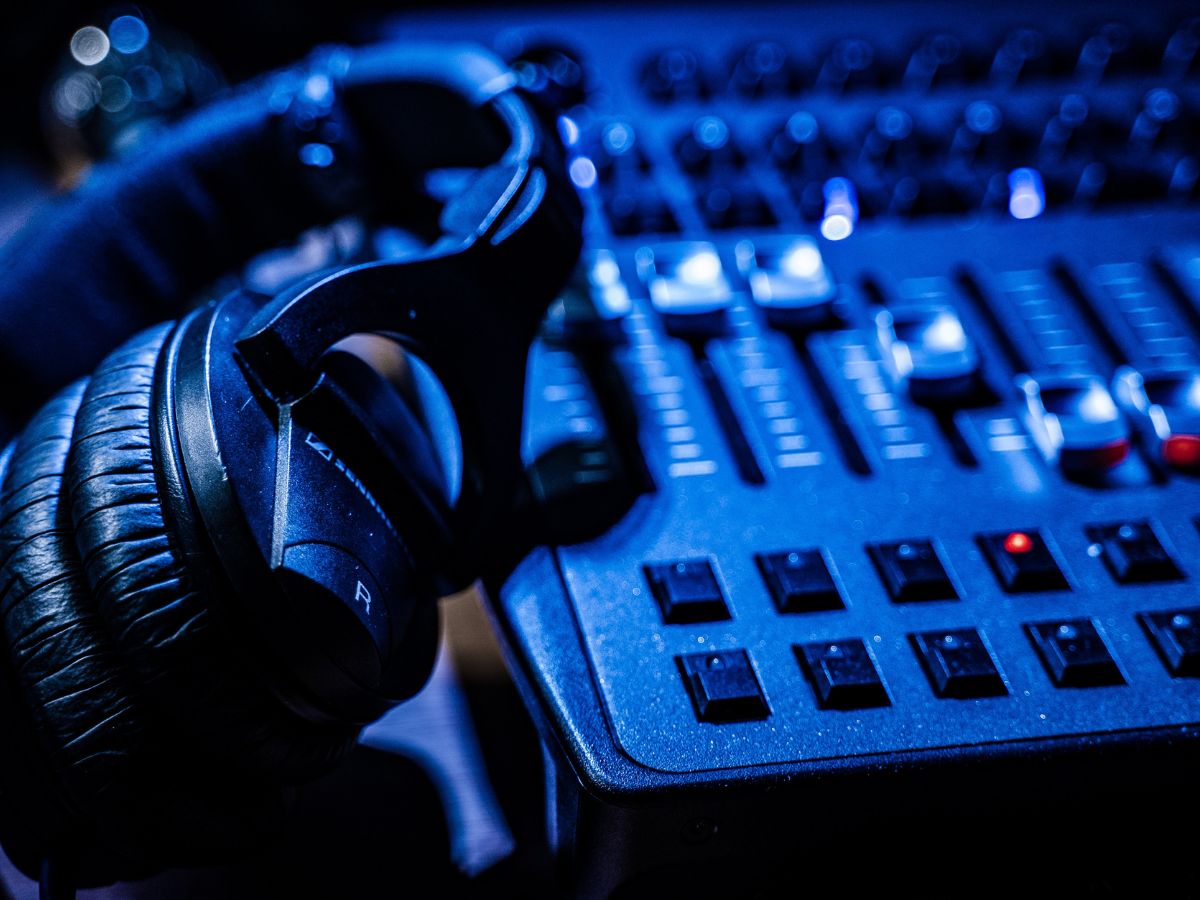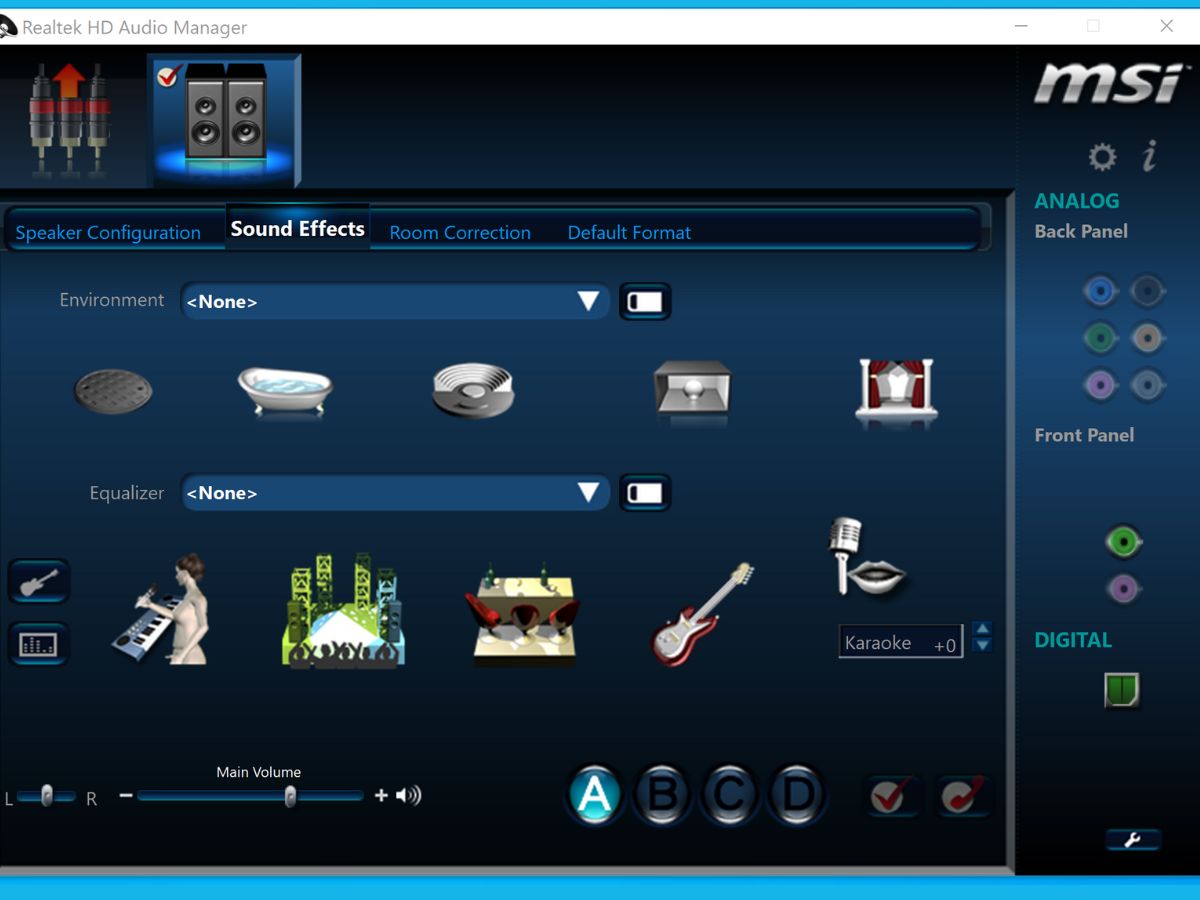Home>Production & Technology>Sound Effects>What Makes The Transformers Sound Effects Good


Sound Effects
What Makes The Transformers Sound Effects Good
Modified: January 22, 2024
Discover the secrets behind the captivating sound effects in Transformers. Learn what makes them so good and how they enhance the overall experience.
(Many of the links in this article redirect to a specific reviewed product. Your purchase of these products through affiliate links helps to generate commission for AudioLover.com, at no extra cost. Learn more)
Table of Contents
- Introduction
- The Importance of Sound Effects in Transformers
- Techniques Used in Creating Sound Effects
- Sound Design Software and Tools
- Sound Mixing and Editing
- Collaboration Between Sound Designers and Filmmakers
- The Role of Music in Enhancing Sound Effects
- Audience Perception and Impact of Sound Effects in Transformers
- Conclusion
Introduction
Sound effects play a crucial role in enhancing the overall cinematic experience, evoking emotions, and immersing viewers into the world of movies. When it comes to the Transformers franchise, the sound effects take center stage, adding depth, excitement, and realism to the larger-than-life battles between Autobots and Decepticons.
The Transformers series, known for its spectacular visual effects and action-packed scenes, wouldn’t have the same impact without the exceptional sound design and audio engineering. From the iconic transforming sound to the powerful explosions and robotic voices, every aspect of the sound effects in Transformers is carefully crafted to captivate and engage the audience.
The goal of sound effects in Transformers is to create a sense of presence, making the audience feel like they are right in the middle of the action. The combination of realistic and imaginative sound effects brings these giant robotic characters to life, transforming them from mere computer-generated images into believable, tangible entities.
In this article, we will explore the elements that make sound effects in Transformers so exceptional. We will delve into the techniques used in creating these effects, the software and tools employed by sound designers, the crucial role of sound mixing and editing, as well as the collaboration between sound designers and filmmakers. Additionally, we will discuss the impact of music on enhancing the overall sound effects experience. By the end, you’ll have a deeper understanding of what makes the sound effects in Transformers so good.
The Importance of Sound Effects in Transformers
Sound effects are a vital element in any film, but they hold particular significance in the Transformers franchise. These films are filled with intense action sequences, transforming robots, and explosive battles. Sound effects serve as a means to heighten the drama, intensify the action, and bring the fantastical world of Transformers to life.
One of the key aspects that sound effects accomplish in Transformers is the creation of a unique auditory identity for each transformer. Each character has distinct sounds associated with their movements, transformations, and weaponry. For example, the iconic transforming sound that accompanies Optimus Prime shifting from a truck to a robot is instantly recognizable and helps establish his presence on screen.
The sound effects in Transformers also contribute to the overall realism of the film. The robots themselves are computer-generated, but the accompanying audio cues add a layer of believability to their actions. When a transformer steps on the ground, the sound of metal hitting pavement helps create the illusion of weight and impact. The result is a more immersive viewing experience for the audience.
Sound effects also play a critical role in generating emotional responses from the audience. The booming explosions, the thunderous clashes of metal, and the intense roar of engines all elicit excitement, suspense, and even fear. By leveraging the power of sound, filmmakers are able to elicit a visceral reaction from viewers and enhance their engagement with the film.
Furthermore, sound effects serve as a means of storytelling in Transformers. They help communicate the intentions, emotions, and personalities of the characters. The sound design of the robots’ voices, for instance, conveys the power, strength, and sometimes the menacing nature of the characters. It adds depth and complexity to their on-screen presence.
Overall, the sound effects in Transformers are essential for fully immersing the audience in the visual and auditory spectacle of the film. They enhance the realism, establish character identities, evoke emotional responses, and drive the narrative forward. Without the impactful sound effects, the Transformers movies would lack the power and intensity that have made them so popular and beloved among fans around the world.
Techniques Used in Creating Sound Effects
The creation of sound effects in Transformers requires a combination of technical expertise, creativity, and attention to detail. Sound designers employ various techniques to craft the unique auditory experiences that accompany the incredible visual effects on screen.
One of the primary techniques used is called “foley.” Foley artists are responsible for recording custom sounds that are synchronized with the actions of the characters and objects on screen. They use a wide array of props and materials to recreate the sounds of footsteps, impacts, and even the intricate mechanics of the transformers themselves. By utilizing foley, sound designers ensure that each movement and action has its own distinct sound.
In addition to foley, sound designers also rely on extensive libraries of pre-recorded sound effects. These libraries contain a wide range of sounds, from explosions and gunshots to mechanical noises and ambient environments. By selecting and layering these pre-recorded sounds, sound designers can create rich and immersive sonic landscapes that bring the transformers’ world to life.
Another technique frequently used is the manipulation of existing sounds. Sound designers often take everyday sounds and modify them to create unique and otherworldly effects. For example, the sound effect of a transforming robot may be created by manipulating recordings of machinery, hydraulic systems, and metallic scrapes. This process allows for the creation of sounds that are both familiar and fantastic at the same time.
Furthermore, sound designers make use of synthesis techniques to generate original, synthetic sounds. By utilizing specialized software and plugins, they can design entirely new sounds that perfectly match the style, aesthetics, and personalities of the transformers. This approach gives sound designers the flexibility to create sounds that are beyond the limits of the physical world.
The combination of these techniques, along with meticulous editing and mixing, results in the intricate and captivating sound effects found in Transformers. Every sound is carefully crafted and placed within the sonic landscape to enhance the visuals, heighten emotions, and immerse the audience in the fantastical world of giant battling robots.
By employing a combination of foley, pre-recorded sounds, sound manipulation, and synthesis techniques, sound designers are able to create an auditory experience that is tailored to fit the unique requirements of the Transformers franchise. The result is a sonic tapestry that adds another layer of depth and excitement to the already visually stunning films.
Sound Design Software and Tools
Sound design in Transformers requires the use of advanced software and specialized tools to achieve the desired auditory effects. These tools empower sound designers to manipulate, layer, and mix sounds to create unique and immersive soundscapes that accompany the on-screen action.
One of the most commonly used software in sound design is Avid Pro Tools. Pro Tools is a professional digital audio workstation (DAW) that provides a wide range of tools and features for recording, editing, and mixing audio. Sound designers utilize Pro Tools to import, arrange, and manipulate sound effects, foley recordings, and dialogue tracks. The software’s powerful editing capabilities allow them to precisely synchronize the sounds with the visuals.
In addition to Pro Tools, sound designers often utilize specialized plugins and virtual instruments to enhance their sound design process. These plugins provide a wide range of effects, including EQ, compression, reverb, and modulation, allowing sound designers to sculpt and shape the sound to fit the specific needs of the scene. Some popular plugins used in sound design include Waves, Soundtoys, and Native Instruments’ Kontakt.
Noise reduction and restoration tools are also essential for sound designers working on Transformers. These tools help remove unwanted background noise, clean up recordings, and ensure the clarity and quality of the sound effects. Izotope RX and Cedar Audio’s DNS are widely used for noise reduction in professional sound design workflows.
Additionally, sound designers make use of synthesizers and samplers to create and manipulate sounds from scratch. Software instruments like Native Instruments’ Massive, Spectrasonics’ Omnisphere, and Ableton Live’s built-in instruments offer a vast array of synthesized sounds and textures that can be tailored to match the unique characteristics of the transformers.
Furthermore, field recording equipment plays a crucial role in capturing real-world sounds that can be used as raw material for sound design. Portable recorders such as the Zoom H4n or Sound Devices’ MixPre series allow sound designers to capture high-quality recordings of various elements, such as impacts, explosions, and mechanical movements. These recordings serve as valuable source material for creating custom sound effects.
Overall, the combination of digital audio workstations, specialized plugins, synthesizers, and field recording equipment provides sound designers with the necessary tools to craft the intricate and immersive sound effects in Transformers. These tools enable them to manipulate, shape, and layer sounds, creating a sonic landscape that enhances the visual experience and engages the audience on a deeper level.
Sound Mixing and Editing
Sound mixing and editing are crucial stages in the sound design process for Transformers. These processes ensure that the various sound elements, including dialogue, sound effects, and music, are balanced, synchronized, and harmoniously blended together to create a cohesive sonic experience.
Sound editing involves the precise manipulation of individual sound elements. Sound designers carefully select and edit the appropriate sound effects, foley recordings, and dialogue takes to match the visuals and enhance the desired impact. They trim, cut, and rearrange sound clips, ensuring that each sound aligns seamlessly with the on-screen action.
During the sound mixing stage, all the edited sound elements are combined and balanced to create the final mix. Sound mixers use their artistic judgment to determine the volume levels, panning positions, and spatial placement of each sound. By adjusting these parameters, they create a sense of space, depth, and movement, enhancing the immersive qualities of the film.
One of the challenges in sound mixing for Transformers is the management of dynamic range. The films often feature intense action sequences with explosions, deep rumbling impacts, and loud robotic sounds. Conversely, they also contain quieter moments with dialogue and subtle ambient sounds. Sound mixers ensure that the dynamic range is controlled, allowing each sound element to be heard clearly without overpowering or distorting the overall mix.
Another aspect of sound mixing in Transformers is the spatial positioning of the sound. Transformers movies use surround sound systems to immerse the audience in the action. Sound mixers utilize the multiple channels of surround sound to accurately place sounds in different areas of the theater. This spatial positioning enhances the realism and impact of the sound effects, while also creating a three-dimensional sound experience.
In addition to sound effects, dialogue plays a crucial role in the mix. Dialogue must be clear and intelligible, even amidst the chaos of battle scenes and explosions. Sound mixers utilize techniques such as equalization, compression, and noise reduction to ensure that the dialogue is clean and balanced with the rest of the sound elements. This ensures that the story is effectively communicated to the audience.
Sound mixing and editing are iterative processes, often involving collaboration between sound designers, mixers, and the filmmaking team. Multiple revisions and adjustments are made to achieve the desired sonic vision for the film. By carefully balancing and blending the multitude of sound elements, sound mixers and editors bring the visual spectacle of Transformers to life through an equally captivating auditory experience.
Collaboration Between Sound Designers and Filmmakers
The collaboration between sound designers and filmmakers is crucial in creating the immersive and impactful soundscapes that are synonymous with the Transformers franchise. From the early stages of pre-production to the final stages of post-production, this collaboration ensures that the sound design aligns with the director’s vision and enhances the overall storytelling.
At the onset, sound designers work closely with the filmmakers to understand the creative direction of the film. They study the script, concept art, storyboards, and discuss the director’s vision for the sound. This collaboration helps establish a foundation for the sound design, enabling the sound designers to capture the essence of the characters, locations, and action sequences.
During production, sound designers may work alongside the production team on set to capture specific sound elements that are critical for later sound design. This could involve recording dialogue in challenging environments or capturing live sound effects that complement the visual effects being filmed. By working together, sound designers and filmmakers ensure that the necessary sound elements are captured effectively during principal photography.
As the post-production phase begins, the collaboration intensifies. Sound designers start their work by editing and selecting appropriate sound effects, foley, and dialogue takes for each scene. They engage in regular discussions and screenings with the filmmakers to refine and align the sound design with the visual storytelling.
Throughout the post-production process, there is a constant back-and-forth between sound designers and filmmakers to address specific sound design needs. The filmmakers communicate their desired emotional impact, and the sound designers propose and implement creative solutions to achieve those goals. This collaboration ensures that the sound design supports the narrative, enhances the visuals, and helps to build tension, excitement, and engagement in the film.
Furthermore, filmmakers often provide guidance and feedback on the placement and timing of sound effects during the mixing stage. They work closely with sound mixers to ensure that the creative intent is fulfilled, whether it’s emphasizing certain sound elements or creating a specific audio atmosphere. This collaboration ensures that the sound elements blend seamlessly with the visual effects, music, and overall filmmaking aesthetic.
Ultimately, the collaboration between sound designers and filmmakers in the Transformers franchise is a synergistic partnership that enhances the storytelling experience. By combining their expertise and creative vision, they create a harmonious audiovisual experience where the sound design elevates the film’s impact, immerses the audience in the world of Transformers, and contributes to the overall cinematic magic.
The Role of Music in Enhancing Sound Effects
Music plays a vital role in enhancing the sound effects in Transformers, serving as a powerful tool to heighten emotions, create tension, and amplify the impact of the on-screen action. It works hand in hand with sound effects to immerse the audience in the cinematic experience and elevate the storytelling to new heights.
One of the primary functions of music in Transformers is to enhance the dramatic impact of key scenes. As the Autobots and Decepticons engage in intense battles, the music swells, matching the energy and rhythm of the action. The combination of epic sound effects and an orchestral score creates a sense of grandeur and elevates the intensity of the visual spectacle, making it more thrilling and memorable for the audience.
Furthermore, music helps to establish the overall tone and mood of the film. In Transformers, the music choices range from heroic and uplifting themes representing the Autobots to ominous and powerful motifs for the Decepticons. These musical motifs become synonymous with the characters and reinforce their identities, adding depth and emotional resonance to their on-screen presence.
Music also acts as a connective thread between different scenes and sequences throughout the film. By utilizing recurring themes and motifs, the score creates a sense of continuity, tying together disparate elements of the story. This cohesion helps to guide the audience through the narrative, enhancing their engagement and emotional connection to the film.
In addition, music can serve as a narrative device to highlight character arcs and emotional moments. It can underscore poignant scenes, emphasizing the drama and amplifying the emotional impact of key moments. The interplay between sound effects and music can create a powerful synergy, evoking a wide range of emotions from excitement and suspense to sadness and triumph.
Moreover, the timing and placement of music work in conjunction with sound effects to enhance the overall cinematic experience. The strategic use of silence or absence of music can create moments of tension and suspense, allowing the sound effects to take center stage and heighten the impact of specific actions or reveals. Conversely, the sudden crescendo of music can elicit a powerful jolt of energy and emotion, punctuating key moments with a heightened sense of drama.
Ultimately, the role of music in enhancing sound effects in Transformers cannot be overstated. It amplifies the impact of the on-screen action, establishes character identities, guides the audience through the story, and evokes powerful emotional responses. Together, sound effects and music provide a multi-dimensional auditory experience, helping to create a world where giant transforming robots come to life and captivate audiences around the globe.
Audience Perception and Impact of Sound Effects in Transformers
The sound effects in Transformers have a profound impact on the audience, elevating the viewing experience to new heights and leaving a lasting impression. The meticulous design and execution of the sound effects immerse viewers in the on-screen action, eliciting emotional responses and enhancing their overall perception of the film.
One of the key impacts of sound effects in Transformers is the creation of a sense of presence. The dynamic and immersive sound design places the audience right in the midst of the robotic battles, explosions, and transformations. The realistic and larger-than-life sound effects make viewers feel as though they are active participants in the epic conflict between Autobots and Decepticons.
The impact of sound effects extends beyond just the visual component of the film. The combination of stunning visuals and expertly crafted sound effects creates a multisensory experience that engages and captivates the audience. The thunderous crashes, metallic clangs, and high-energy robotic sounds reverberate through the theater, stimulating more than just the eyes. This multisensory stimulation further solidifies the audience’s emotional connection to the film.
Sound effects also heighten the emotional impact of key narrative moments. Whether it’s a suspenseful chase sequence, a climactic showdown, or a tender character interaction, sound effects enhance the storytelling by evoking specific emotions in the audience. For example, the shrill screech of metal on metal during a tense fight scene can amplify feelings of anticipation and excitement, while the gentle hum of a transformer’s voice can evoke a sense of awe and wonder.
The precision and synchronization of sound effects with the visual cues and narrative beats also contribute to the audience’s perception of the film’s pacing and rhythm. Well-designed sound effects help enhance the flow of the story, guiding the audience through moments of tension, action, and resolution. The synergy between sound effects and the film’s editing creates a seamless and cohesive viewing experience.
Moreover, the impact of sound effects in Transformers lingers long after the film is over. Memorable and iconic sounds, such as the transforming noise or the powerful blasts, become indelibly etched in the audience’s memory. These sounds become synonymous with the franchise and evoke a sense of nostalgia and excitement when heard in subsequent films or other media. The sound effects become a part of the collective experience and identity of the Transformers universe.
In summary, the sound effects in Transformers have a profound impact on the audience’s perception of the film. They create a sense of presence, heighten emotions, enhance the storytelling, and contribute to the overall cinematic experience. The careful design, execution, and synchronization of sound effects ensure that viewers are fully immersed in the world of Transformers, leaving a lasting impression that extends beyond the duration of the film.
Conclusion
The sound effects in Transformers are an integral part of the franchise’s success, contributing to the immersive and captivating cinematic experience. Through meticulous techniques, collaboration, and the strategic use of sound design software and tools, the sound designers are able to create a sonic landscape that brings the world of transforming robots to life.
From the iconic transforming sound to the powerful explosions, every sound effect is carefully crafted and strategically placed to enhance the visuals, elevate the emotions, and engage the audience. The collaboration between sound designers and filmmakers ensures that the sound design aligns with the director’s vision and contributes to the overall storytelling.
Music also plays a crucial role in enhancing the impact of the sound effects. It adds depth, emotion, and coherence to the sonic experience, amplifying the visuals and guiding the audience through the narrative. The careful timing and placement of music work in harmony with the sound effects to create a truly immersive and dynamic auditory experience.
Audiences are captivated by the sound effects in Transformers, which create a sense of presence, heighten emotions, and leave a lasting impact. The meticulously designed soundscapes transport viewers into the epic battles and larger-than-life world of Autobots and Decepticons. The combination of sound effects and visual effects create a multisensory experience that fully engages the audience’s senses.
In conclusion, the sound effects in Transformers are a vital component of the franchise’s success, elevating the cinematic experience to new heights. Through careful craftsmanship, collaboration, and the skillful use of music, sound designers bring the transforming robots to life, immersing the audience in a world of excitement, wonder, and awe.











